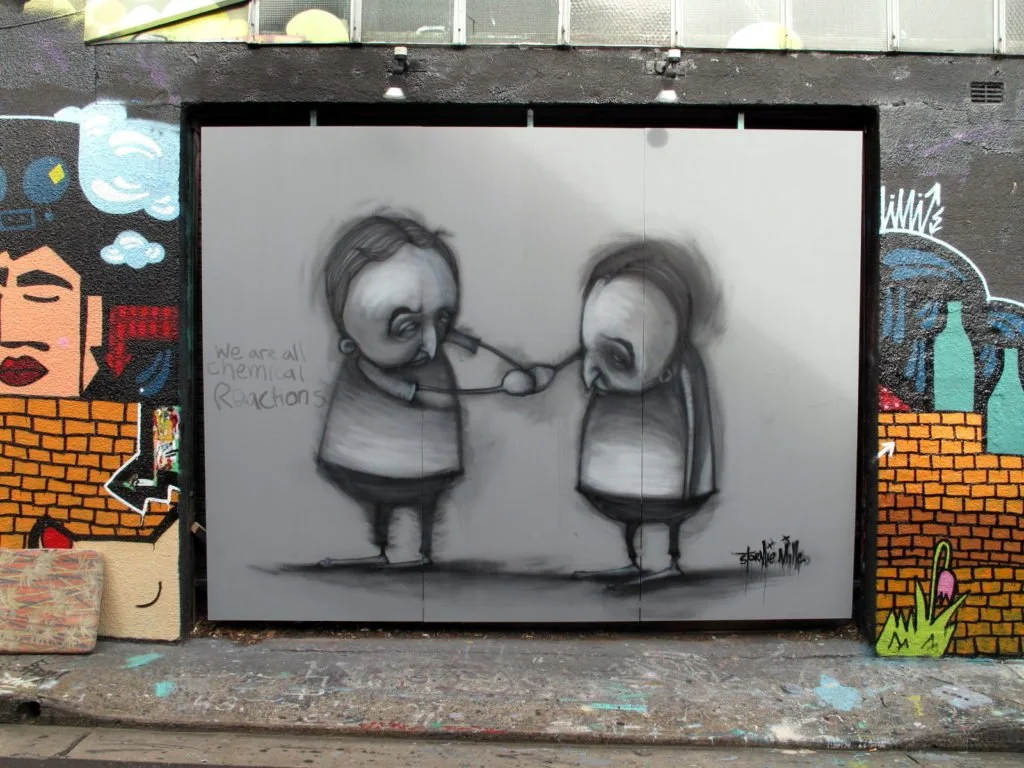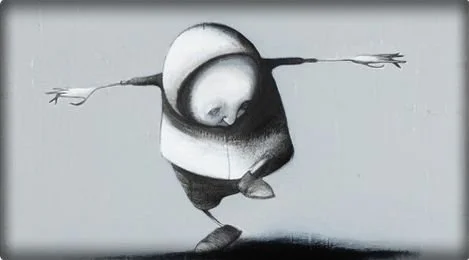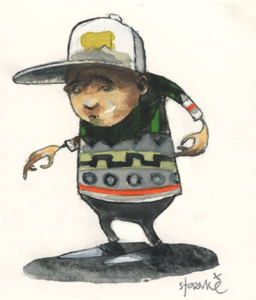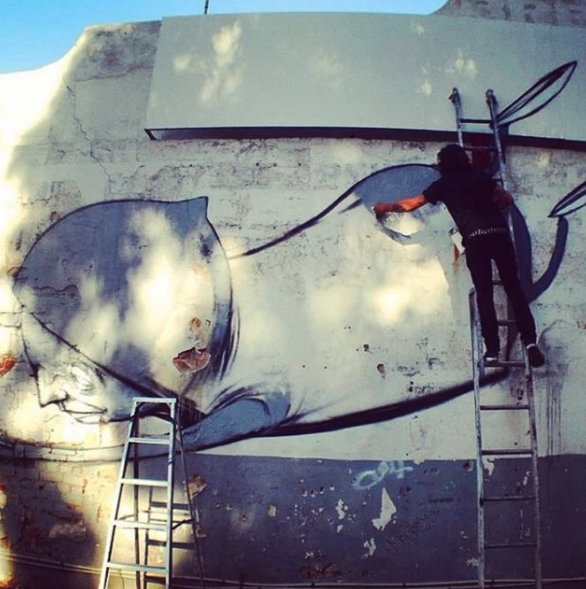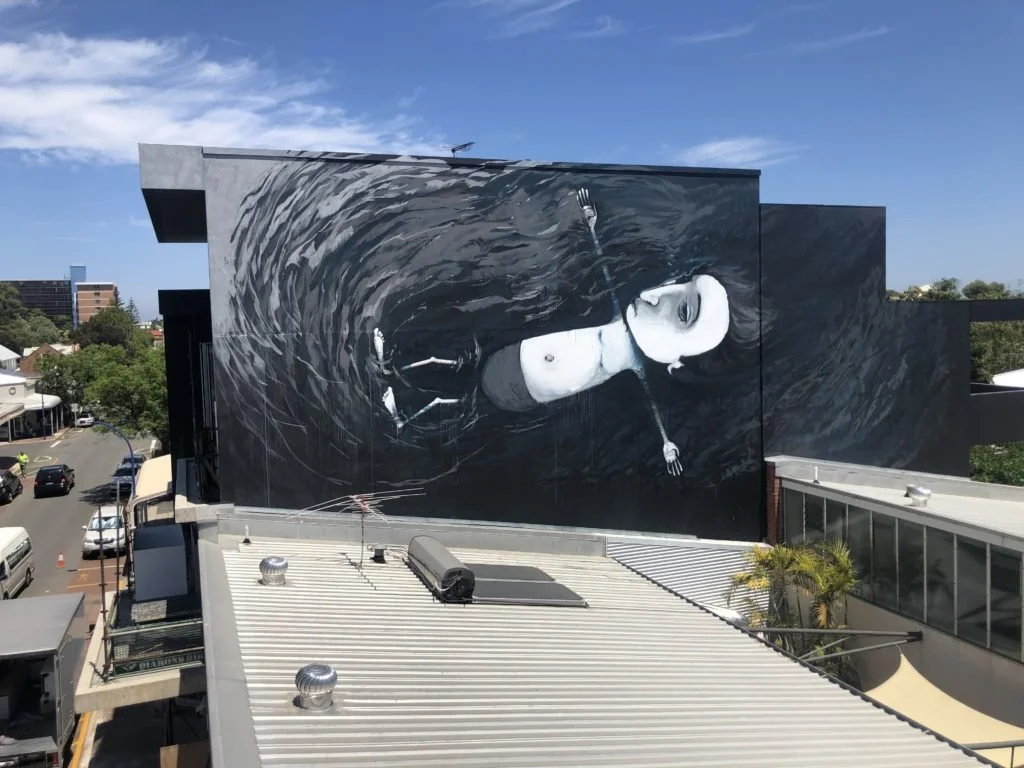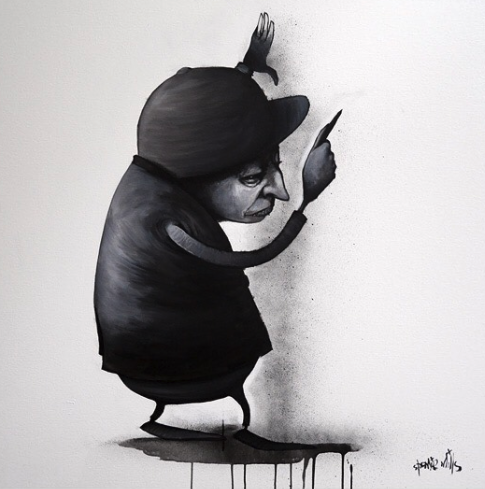Stormie Mills on Street art, Graffiti and The Final Frontier Of Humanity
"When you are starting you can be free with what you do. You can experiment, be bold, and adventurous, as you move along the line of life this changes and so the challenge becomes to keep that, to be what you were when you started, to refer to your youth in a way that keeps things saying something, to speak of the past with a gentle understanding and make images that talk to the times we are in."
For almost three decades, Australian artist Stormie Mills explored the realms of humanity through his enigmatic, whimsical characters that touch the human spirit — its strength, struggle, and triumphs. In this interview, he delved into his beginnings, the in-between, and what artists today should remember.
You started doing graffiti in 1984 - how was the street art scene back then? And how has it changed over the years?
It was sometime around then - maybe a bit earlier. I used to write 82 after one of my tags because I'd first done some graffiti at that time. For me, there wasn't a street art scene or a graffiti scene in the city I lived in. There was graffiti-like, "Fred says, No Nukes' or "this used to be the land of laughing trees" - social-political statement stuff. What was going on was in the background of music video clips coming in from New York like Rock Steady Crew's "Hey you".
I had already heard Blondie's "Rapture' on a plane trip from Europe to Australia and loved it "Beat Street" came out in the cinema and had a lot of set painted graffiti in it.
The combination of visuals and music kept drawing my interest deeper. So I was being more and more influenced by this new thing from afar and my drawings reflected that until one night the influence meant I had to go out and paint in the streets.
The predominant theme in your work revolves around sadness, isolation, and human emotions - how did it start?
It is all of those things but it is also about internal strength, mental strength, and intestinal fortitude.
In my childhood, I found reading to be very difficult because of dyslexia and learning difficulties. When I was very young I carried around a book on the Battle of Waterloo, I didn't understand a word but I liked the illustrations of ships. Then, I discovered Roald Dahl and his stories were captivating and words also came with Sir Quentin Blakes illustrations which really started me drawing. From figures to people to flying to cupboards, or people flying on cupboards!
The thing about graffiti writing was there were also figures (characters) used to accent the lettering. This is what drew me in. Many years later of doing these figures, of naturally being drawn to them, to create them, I took some time to go through everything I did and discovered their iconic themes in life, struggle, and death.
I began to focus on these and what it meant and how to turn this into something that had meaning, not just something that was about self.
When was it you started to develop an interest in visual/street arts?
Painting came along later but as a kid a lot of the time I was drawing. So for me, the drawing and painting connect was in the early '80s. My very first awareness of painting walls outside was in the late 70's. I saw a film on TV about a kid in New York and he did some graffiti - someone's name on a wall and I liked that idea. So again in the 80's I was able to connect the concepts and started making my own work.
Do you remember the very first paid job you had?
My first paid job might have been a canvas for a guy that owned a shop - he wanted something for his kid, but I don't think I really made any money from making paintings or walls for a very long time.
It was never about making money - often it wasn't about even getting paid. It was about making artwork, trying to say something which cost me more than I have made, but I am richer in spirit because of this.
What is your favourite piece of work you've done and why?
My answer to that question has always been my last one and my next one, but really there isn't any one favourite for any one reason.
Every time you paint something you learn. Every time you paint something there are many different successes and failures. This is for me the process of making works. The action of this is important to the contribution of the work, its environment and ultimately it's "life" what happens to it after you are finished and it is left for others.
What is the most difficult part of being an independent artist?
Living up to you own personal moral guidelines. How you make work, who it's for, where it goes.
All those things that are about being an independent artist that keeps as free as possible the idea of what the essence of their work is, what it stands for and how it is put out there. It is super personalized and self-reflection with a view towards incremental improvement in technique or wild experimentation means you have to be critical of yourself in some ways, it also makes me difficult to live with!
What challenges do you face today that are different than when you started?
When you are starting you can be free with what you do, experiment, be bold, and adventurous. As you move along the line of life this changes and so the challenge becomes to keep that, to be what you were when you started, to refer to your youth in a way that keeps things saying something, to speak of the past with a gentle understanding and make images that talk to the times we are in.
And why does street art matter more now than ever?
In this day and age when so much communication is via the internet. To make work on the street that people still want to go to see, to be in that space and not cyberspace, for me this is the challenge of painting at this time. Social media is so owned by the larger media field, although it might seem independent I don't think it is so much anymore and so it's censored or it's edited, or even removed, or worse still it is drowning in misinformation.
I've heard it said that "the streets don't lie" of course this in itself is a lie, but there's more truth there than social media. The backdrop to breaking used to be graffiti, now the background to protests is street art and it matters.
For more of Stormie's works, head on to his website, and check out his Instagram.


